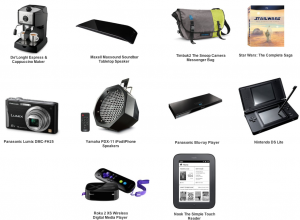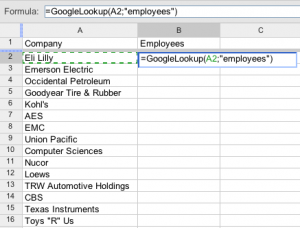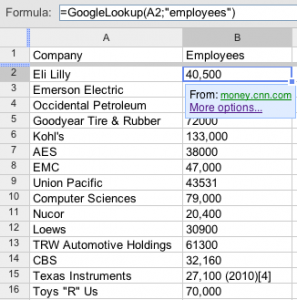The following post is from my notes from the FutureM session “Marketing Secrets of Successful Startups.” I’m paraphrasing on each of these, so please correct me if I’m wrong.
8 Marketing Secrets of Successful Startups
Summary: The increasingly higher expectations put on agencies and marketers have created a Darwinian environment where only the scrappy and creative can thrive. Some of the most effective and efficient marketing campaigns are run inside stealthy startups. Join us for an inside look at how successful startups do customer development and marketing. You’ll learn practical marketing hacks, some of which have never been shared before from a top-notch group of entrepreneurs and startup marketers.
Speakers
Adam Berrey, Formerly of Allaire, Macromedia and Brightcove.
Speaker bios are here.
Intro
This session was based on Sim Simeonov’s belief that some of the most creative marketing campaigns come from startups. When you don’t have a lot of resources or cash, but have the same marketing responsibilities as large corporations, you have to get creative. Rather than simply speaking in generalities, the focus of the presentation was on giving the audience usable advice that can be used daily.
1. Produce Content. Lots and lots and lots of content:
Christopher O’Donnell from Hubspot/Performable
The first speaker was Director of Product Management at Performable which was recently acquired by Hubspot. Hubspot went from 0 to 5,000 customers in 5 years and gets 45,000 leads/month.
What’s their secret? Content.
The takeaway: Don’t be afraid to start having a presence before you have a product. Hubspot started generating brand awareness before they had anything to sell. By starting to engage the market early, you’ll be able to vet your idea, and you can start establishing thought leadership and legitimacy. And that comes in handy when you’re trying to get coverage when the product is ready.
An interesting note: 20% of all searches are for local businesses. But how many local businesses have updated blogs and twitter campaigns, etc.? Find your niche and bang out lots of content, and the world will come to you. Easier said than done, but a universal truth nonetheless.
2. Make something people want to share, and make it easy to share them
Sarah Hodges Director of Community Marketing, Runkeeper
RunKeeper started as mobile app to keep track of fitness and was one of the first 100 aps in the app store, giving them a “first mover” advantage. They built the app first, then built out their site
RunKeeper has over 6M registered users, and the company does not pay for user acquisition. Instead, all signups are based on word of mouth. They haven’t spent a dollar on user acquisition.
How did they do it?
People want to share their accomplishments (like training for and racing in marathons) and RunKeeper built sharing into their product to allow for that. It works. Over 90% of new users come in through social media or direct search. Users have shared over 4 million activities to Facebook and twitter.
The takeaway: Give people something that makes them look smarter/healther/funnier/etc., and they’ll share it. Make it easy to share, and even have the content they share hook back to your landing page.
3. Have a Point of View
Adam Berrey
Establish a position with a strong point of view. He calls this “Point of View Marketing”. In his anecdote, Berrey recalls his time spent selling to IT people, who were “pudgy and horrifically boring.”
Next he started working at a company that was developing a product for “TV on the Internet”, and before they had a product, they started telling the “The Interenet is going to kill TV” story to media executives. By taking a strong point of view, and telling a consistent story, they got coverage on the NYTimes, WSJ, etc. even before having a product. Having a point of view got them attention in the marketplace and PR coverage
The takeaway: Have a strong point of view. Have stats to back it up.
4. If Your App Is On A Marketplace, Understand How Rankings Work
Chris Hulls, Founder & CEO, Life360
I’m going to do this speaker a huge disservice, as I don’t understand what his product really does, and I’m probably highlighting a minute detail of his presentation, but it was interesting to me.
I believe Chris said that their company is trying to turn smart phones into OnStar. Their goal is to get moms to download their app. The application is listed in both the iPhone and Android App Marketplace, and the two are decidedly different.
In the iPhone App Store, users generally browse for apps. Since Apple moderates each category, users stick to going through categories and rarely search. Rankings are done solely through the number of gross downloads. Because of this, the goal should be to get as many downloads as possible regardless of whether the download is a good one (regardless of whether they’ll ever convert to a paid app, etc.). For instance, tapjoy leads are not going to buy your product, but they’ll install your app just to get credits in the games/apps they already use. Because of this, it’s worth advertising there simply to inflate your gross download numbers.
Conversely, the Android Marketplace weighs reviews, the number of downloads, and the number of uninstalls to determine an app’s ranking. So in this case, tapjoy-like leads can hurt more than help, and should probably be avoided.
The takeaway: If your app is listed in a marketplace, figure out how the rankings work and take advantage of that knowledge. It’s much easier to keep a high ranking than it is to get there in the first place.
5. Build a story factory in 5 easy steps
Sim Simeonev
Why stories? They’re a unit of communication and sharing. They produce low-cost repeatable inbound marketing.
Sim’s 5 easy steps to building a story factory:
- Pick a theme – relevance over time + scarcity. You want to produce what others don’t know about, keeping you both relevant and unique.
- Create a template – The example used here was Visible Measures and their top 10 viral video Ad chart.
- Get the data – Extending the Visible Measures example, they already have the data on which ads are performing the best. But in the absence of having the actual data, there’s always external info and surveys.
- Produce the story (humans + machines) This one is pretty self-explanatory.
- Distribute – Share value and create heroes. Again, Visible Measures produces that chart, and AdAge distributes it and gives Visible Measures attribution. Win win.
The takeaway: Once you have scarce, ongoing, relevant content, the world will come to you.
6. Create Early Advocates
Dave Balter, Founder & CEO, BzzAgent (Dunn Humby)
Balter details 4 tools for creating early advocates by asking: What makes customers share?
- Generate Status: Balter asked the audience “How many of you checked in on foursquare when you came into this room?” Several people raised their hands. “Why?” he asked. It’s all about the badges, which are perceived third party status validators (ok, I made that up). Think about Twitter followers, linkedin connections, Facebook friends, etc. People do this for status (badges).
- Offer incredible value: This may sound obvious, but it isn’t. In this context, Balter is referring to short term deals that focus on creating a rush of exposure based on a ridiculous discount. For instance, he gave the example of a Denny’s Ad that told people to show up at a certain time for a free meal. There was a line around the block to get in, making people think “hey, I should go to Denny’s some time. Look how many people are lining up to go in there.” More examples: Starbucks free iced coffee. KFC running out of chicken. Create a false supply and demand ratio, and that will artificially inflate demand. Groupon’s entire model is based on this.
- Make it Scarce – if something is going to run out, we better get it. Apple is the best at this….they’ll inevitably run out of iPads and iPhones despite having the capability to make plenty of them. Another example: McRib. They couldn’t sell it before, but now that they bring it back in limited release, people go nuts over it. There’s even a McRib finder. Seriously. McDonalds took a dog of a product (I’m not saying they’re made from dogs. It’s an expression) and made it popular by making it scarce.
- Provide Exclusivity (or Access): Create something that you have to qualify for. Example: AMEX black card. Because it’s so exclusive and only a select group qualifies for it, people want it. Smartbargains changed to RueLaLa, and the only thing that changed is the fact that they added exclusivity. Mass market to exclusive is what makes $$. C
The takeaway: Understanding what motivates people to want something emotionally, and bake that into your offering.
7. Create a sense of community among users
Stephanie Shore, VP Marketing, Zipcar
Stephanie Shore, VP of marketing at ZipCar sat down with Simeonov for a Q&A session on the momentum her company has experienced in recent years. For ZipCar, Shore said their success rests in creating a sense of community amongst users. Despite geographical boundaries, Shore explains how ZipCar plays up users’ common interests and unites them with stories, photos and even crowdsourcing activities. Getting customers invested in your brand and invested in each other is a huge part of startup marketing, Shore explains.
This was the most surprising presentation of the day, as I thought “seriously? A presentation on Marketing Secrets and giving out tee shirts is the topic?” Yep. I was wrong.
Chris shows how Wistia, a video hosting and analytics platform for B2B customers, gives tee shirts to customers and prospects to enhance their word of, well, shirt marketing. They buy the super soft $22 apiece American Apparel shirts in bulk, and get the price down to $15 total including shipping and printing.
When they send the tee shirt to the prospect, the response is amazing. The shirt is accompanied by a hand-written note and is signed by the entire team, thanking the prospect/customer for being a friend of Wistia. Take a look at their twitter feed, and you’ll see scores of people thanking Wistia and sharing photos of the shirts. Savage went on to provide stories of customers calling their Wistia Tee their “favorite shirt” that they wear every weekend. It’s a great way to make a potential customer happy and spread the word at the same time.
Additional Coverage








